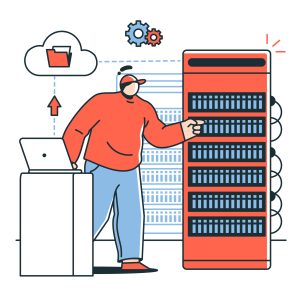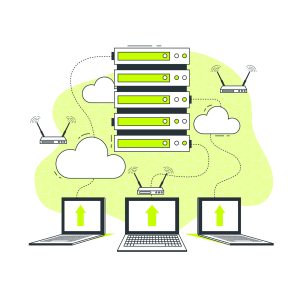This article offers a comprehensive analysis of two widely popular database technologies i.e.: MariaDB Vs MySQL. These database technologies power millions of sites across the world. So, let’s get started!
MariaDB vs MySQL Differences
Even though MariaDB is a fork of MySQL, these two database management systems are however considerably distinctive:
- MariaDB is entirely GPL licensed whereas, on the other hand, MySQL takes a dual-license approach.
- Each handle thread pools in a distinct form.
- MariaDB is compatible with several storage engines.
- In numerous use cases, MariaDB provides better performance
Now as we discussed Brief differences between MariaDB Vs MySQL, let understand what MariaDB and MySQL are.
What is MySQL? (Introduction)
MySQL is a Relational Database Management System (RDBMS) that was first released by a Swedish company MySQL AB. MySQL was released GNU GPL (General Public License). In 2001, the software had over 2 million installations and by 2004, the software was downloaded over 30000 each day.
In 2008, MySQL acquired Sun Microsystems and in 2009, Oracle took over Sun Microsystems and eventually got MySQL. Alike the other RDBMS, MySQL utilizes tables to store data in the form of rows and columns. It has triggers and stored methods to sustain the relationships among tables and also assists several keys like Primary Keys and Foreign Keys in managing data integrity and consistency.
Since 1995, MySQL is utilized by several organizations. A few organizations that utilize MySQL corporate: NASA, Tesla, GitHub, US Navy, Netflix, WeChat, Facebook, Zendesk, Twitter, Zappos, YouTube, and Spotify.
Meanwhile, you can read this blog post on “Easy Fix for “Your PHP installation appears to be missing the MySQL extension?””
What is MariaDB? (Introduction)
MariaDB is a fork of the original RDBMS (Relational Database Management System), MySQL. In October 2009, MariaDB had its first release with version 5.1.38 Beta, based on MYSQL 5.1.38. It is an enhanced version of MySQL and was designed to include features such as security and performance that were priorly not available in the original MySQL.
The developers of MySQL created MariaDB in October 2009. The main intent to build this database technology was to make sure that MySQL codebase could be openly available (free) for all. MariaDB started with version 5.1 and till now had 10 major releases. The latest stable version of MariaDB is MariaDB server 10.5 and is supposed to be supported till 24 June 2025. And, at the moment the developers are working on MariaDB Server 10.6.
MariaDB is an open-source platform that provides an advanced Galera Technology that offers backward compatibility and additionally supports a popular and standard querying language.
MariaDB additionally operates under the GPL (General Public License), BSD (Berkeley Software Distribution), or the LGPL ( Lesser General Public License). Through this means, companies or organizations that serve any of the licenses can include MariaDB into their systems easily. MariaDB likewise without any complications could be integrated with other RDBMS. In addition to this, it is compatible and supports PHP, a commonly used programming language for Web Development.
MariaDB is utilized by several huge organizations, Linux distributions, and also enterprise organizations. A few organizations that utilize MariaDB incorporate Google, Craigslist, Wikipedia, ArchLinux, RedHat, CentOS, and Fedora.
Also read: What is a Database? Why Do We Need It?
Key Features of MySQL
MySQL is one of the oldest RDBMS that is commonly used even today. Its regular updates and performance efficacy are few key aspects that define its success. A few key features of MySQL are given below:
- MySQL is one of the oldest open-source software in the market
- This database management software is highly scalable and flexible to all kinds of data and users.
- MySQL provides high performance and availability to be utilized any time – anywhere by several users.
- It is compatible with several operating systems like Solaris, OS X, FreeBSD, Linux, and Windows.
- The enterprise edition of MySQL has proprietary code that just the MySQL users can access.
- MySQL is written in C and C++
- It has 1600 fork processes builtin
- With the help of MySQL Router, it provides routing however; doesn’t support Data Analytics.
Key Features of MariaDB
MariaDB is a lightweight version of MySQL and offers enhanced and newer features for MySQL. A few of the primary features of MariaDB are given below:
- MariaDB is open-source software that provides backward compatibility
- It consists of 12 new storage engines including PBXT, Maria, XtraDB, and Federated X
- MariaDB has a bigger connection pool and supports up to 200000 connections and additionally has better and faster data replication.
- It is quicker than MySQL, however; doesn’t support Data Masking and Dynamic Columns.
- MariaDB comes with several newer commands like WITH and KILL and likewise is compatible with JSON.
- It includes plug-ins to mark a few lacking features that are available in the MySQL Enterprise Edition.
- MariaDB is compatible with several server operating systems. Some of them are FreeBSD, Linux, Solaris, and Windows.
- It allows routing through the utilization of the MariaDB MaxScale router and also supports Analytics by utilizing MariaDB ColumnStore.
- The Syntax, Data Structures, and Indexes are considerably alike to MySQL, so it becomes easy to convert code from one language to another.
- MariaDB is written in C, C++, Bash, and Perl.
- MariaDB has 868 fork processes built in it.
MariaDB Vs MySQL: Which one to Choose?
Now that you have a basic understanding of both technologies, let us try to solve your query on which database technology to choose between the two. You need to make decisions based on the business needs, budget, and few other parameters. Nevertheless, below we have stated few prime factors that help you choose among MariaDB Vs MySQL.
Speed and Performance
According to reports, MariaDB is faster than MySQL, an INSERT statement can be executed 24% faster than the standard MySQL environment. MySQL has a lesser storage engine which as a result impacts its processing speed and as a result is not able to compete with the lightweight and enhanced MariaDB.
Database Structure & Syntax
Database Structure and Syntax are important for the working of any Database. Without having an ideal format to execute code, the users won’t be able to access the records in the database.
Because MySQL follows an RDBMS structure, that comprises of tables that contain rows and columns, and MariaDB, which is a fork of MySQL, this signifies that the Database Structure, Indexes, Syntax, and relationships among the tables of both the Databases are alike to each other. In fact, MariaDB developers do a regular merge of the MariaDB code with the MySQL code.
Indexes likewise are sustained in the form of B+ Trees for both the Database technologies. Some of the Syntaxes in both the Databases are shown below:
- Selecting Records from the Department Table
MySQL Syntax
SELECT *
FROM department;MariaDB Syntax
SELECT *
FROM department;- Inserting Records to the Department Table
MySQL Syntax
INSERT INTO department(dept_id, dept_name)
VALUES ('1', 'Marketing’');MariaDB Syntax
INSERT INTO department(dept_id, dept_name)
VALUES ('1', 'Marketing’');- Updating the Records of the Department Table
MySQL Syntax
UPDATE department
SET dept_id = ‘2’
WHERE dept_name= ‘Production’;MariaDB Syntax
UPDATE department
SET dept_id = ‘2’
WHERE dept_name= ‘Production’;Deployment & Clustering
Deployment means the capability to utilize the database over several applications. And clustering is the capability to have several instances of the data from a parent database to a child database. Both these processes are crucial because while a company has a proper deployment and backup of its resources, it can manage employees efficiently.
MariaDB is written in C, C++, Bash, and Perl and can be deployed on various server operating systems like FreeBSD, Linux, Solaris, and Windows. You can enable the Clustering simply by activating the configuration parameters. Clustering can be achieved in Maria DB in a Master-Master or Master-Slave manner. A Multi-Master technology is additionally supported by MariaDB utilizing the Galera Cluster model.
MySQL is written in C and C++ and can be deployed on server OS like FreeBSD, Linux, Solaris, OS X, and Windows. Clustering additionally is a one-way synchronous replication process where one server will behave as the Master and all the others will be the Slaves. MySQL helps to replicate data from all Databases, selected Databases, or even selected tables within a database.
Conclusion
Hope this article helped you know the difference between MariaDB Vs MySQL.
Having said that, if you own a WordPress website and wanna improve your website’s SEO, you can check out our cheap Linux VPS hosting plans that offer optimal speed and security. Thereby, improve your website’s SEO.















